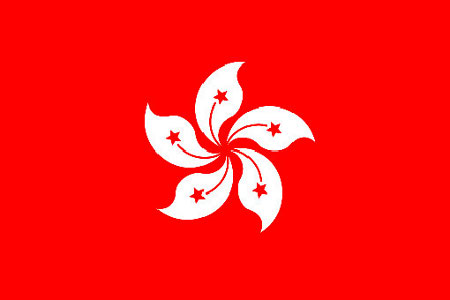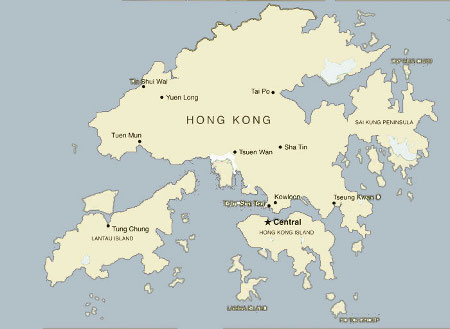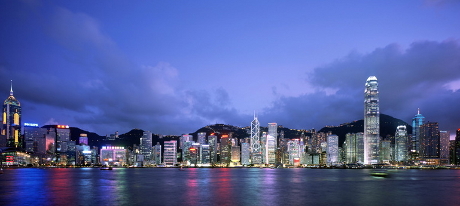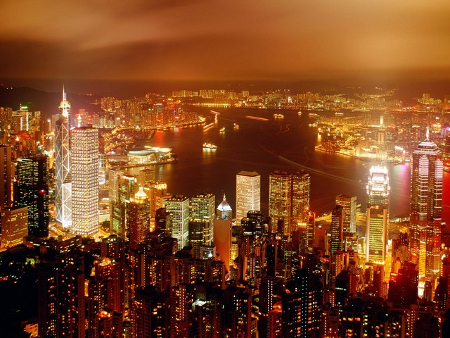Hong Kong has become one of the most successful islands in the world. Its growth as a financial center has blossomed over the last century and today, its future seems as bright as ever. While it became a dependent territory of the United Kingdom in 1842, since 1997, it has once again been brought back in the fold of China. Today, Hong Kong continues to enjoy growth and prosperity under China’s one country, two systems policy.

The Island of Hong Kong
The island of Hong Kong is officially known as: Hong Kong Special Administrative Region. Hong Kong is located in the southern part of China and is found in the South China Sea. While the island of Hong Kong is small (a land mass of about 427 square miles), the population is quite high, with the island inhabitants reaching over 7 million. This gives Hong Kong one of the highest population densities in the world. Hong Kong is known as one of Asia’s preeminent financial markets and it ranks as one of the most successful and important financial, cultural and communications hubs in the world. While Chinese inhabitants make up the vast majority of those living on Hong Kong, there are quite a few expatriates of all nationalities living in Hong Kong as well. In fact, Hong Kong is known for its cosmopolitan ambiance.

The Fragrant Harbor
Hong Kong comes from the Cantonese word Hakka which means fragrant harbor. The original harbor of Hong Kong is now known as Aberdeen Harbor. While the Chinese has settled the island of Hong Kong for millennia, in Europe, the first mention of Hong Kong was recorded by the Portuguese explorer Jorge Alvares who arrived in 1513. The name Hong Kong was used officially for the first time in 1842, when China and Britain signed the treaty of Nanking.

An Important Trading Post of Britain
In the mid 1800’s Hong Kong was used by the British to an extent for trading opium among other commodities. In 1839, the Qing Dynasty’s refusal to no longer import Opium- a dangerous narcotic that had immense social and financial affects on China’s population led China and Britain into the First Opium War. In 1842, Hong Kong became occupied by Britain and under the Treaty of Nanking, the British established a Crown Colony and the founding of Victoria City. In the coming years and during the Second Opium War, Kowloon Peninsula and Stonecutters Island was also ceded to Britain and in 1898, Britain obtained a 99 year lease of Hong Kong, at that time known as the New Territories. For this 99 year period leading up to 1997, Hong Kong remained in the control of the United Kingdom
Hong Kong During World War II
During the early part of the 20th century Hong Kong played a major role in Asia as a center of trade and it grew in leaps and bounds financially and culturally. However, during World War II, the Empire of Japan was able to drive the British off the island in the Battle of Hong Kong and took control of Hong Kong as a colony on December 25, 1941.
During the initial invasion and following occupation of Hong Kong, the civilians of the island suffered enormously. Food shortages were wide spread and hyper inflation was experienced by all since all currency needed to be converted to military notes. In fact conditions were so bad that from 1971 to 1945 when the control of Hong Kong returned back to the British after Japan surrendered, almost half the population of civilians who lived in Hong Kong died.

Hong Kong Recovers After World War II
After World War II, the population of Hong Kong quickly recovered due to an influx of migrants from the mainland of China- mainly due to the Chinese Civil War and then the proclamation of the People’s Republic of China. In addition, due to the communist take over of the mainland, many companies shifted their operations to Hong Kong. Over the years, industry such as textiles and manufacturing grew. Not only was labor fairly cheap, but Hong Kong being mostly built on a capitalist philosophy made it easy for businesses and entrepreneurs to operate. And while Hong Kong grew economically, China became more isolated, pretty much leaving Hong Kong as the only link between the world and the Mainland. Today, Hong Kong is known less for its manufacturing and more for its service based industry- specifically in finance and banking sectors.
The United Kingdom Hands Over Control to China
The change over from British to China’s control took place on midnight on July 1, 1997. However, both the United Kingdom and the People’s Republic of China were planning the transition close to 20 years before then. In 1984, the Sino-British Joint Declaration was agreed upon. This document stipulated that Hong Kong would be governed as a special administrative region for at least the next 50 years beginning in 1997. It would retain its laws and to a large extent its autonomy. This agreement was instrumental in making sure that Hong Kong would continue to succeed and wouldn’t face severe disruptions when the transition took place.

One Country, Two Systems
Today, Hong Kong is ruled by the principle of one country, two systems. Based upon the Sino-British Joint Declaration, Hong Kong continues to enjoy a wide degree of autonomy except in matters of defense and foreign affairs and is ruled by Basic Law, which is outlined in Hong Kong’s constitution. Under Basic Law, the people of Hong Kong continue to enjoy an economic system based on capitalism, a guarantee of human rights and freedoms and a government with a large representation of democratically elected officials.
Hong Kong continues to be a powerhouse economically and culturally in Asia and for many the future of Hong Kong is bright.
Comments are closed